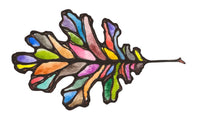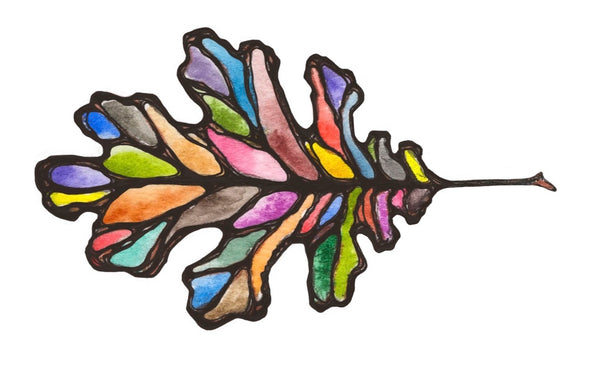
Breaking In Enamel Palettes & Mixing Areas To Prevent Watercolor Beading
There is nothing quite like the thrill and excitement of a sparkling new watercolor palette. And there is nothing quite like the whiplash from quickly moving from delight to hair-raising frustration when you mix your first colors and find that they hunch up into tight little stubborn beads of paint in your mixing area.

This is how color appears in a brand new enamel Bijoux Box mixing area, even after adding more water and rubbing the brush across the entire surface many times.
Enamel is considered one of the best surfaces on which to mix watercolors, but that is after it has been broken in, which takes time.
The good news is, you no longer need to patiently suffer through those first months any longer furiously rubbing your brush into the mixing area in hopes of catching a quick glimpse of the true color you're mixing.
If you take the time to prime your palette before first use, you can save yourself all of this frustration, and essentially skep ahead in time to enjoy using a freshly broken in enamel palette.
You can immediately notice the difference as a result of priming. The first picture in this post of the enamel oval mixing palette, shows the results of applied French Orange Ochre on a palette that has been half primed, half left new. The top was primed using the steps listed below. Paint was applied across the entire surface of the palette in the same way.
What you want to do is rub down your enamel watercolor mixing areas with a priming pad to gently buff the surface.

The secret: microabrasion.
You want to abraid the surface of the enamel on a microscipic level. It creates nicks and channels that give your watercolors some traction and thereby helps break the surface tenstion of the water that causes beading on very smooth and nonporous surfaces.
A priming pad is the tool that can best help to do this. A priming pad is nothing more than melamine foam, which is the same material used in magic sponges. If you have one of these under your kitchen sink that will do just perfectly. (Just make sure not to use the kind with additional cleaners inside.)
It's pretty simple, but just follow the step-by-step instructions below, and you'll be set to mix away:
How To Break In Your New Enamel Watercolor Palette, Step-By-Step
1: Wet your priming pad with water.

It is easier and more effective to buff with a wet priming pad.
2: Rub down your white enamel mixing areas using a circular motion and only moderate pressure for 5-10 minutes.

3: Rinse your palette with clean water. Then, dry off your palette with a clean rage or paper towel.
It will be immediately apparent whether you have done enough buffing to break the surface tension of the water.

In the above picture, there is a similar amount of water in both mixing areas. The mixing area on the left has been buffed, while the other size has not been treated. Notice how the water beads up on the right, and how it is relaxed and spread out on the left.
After you rinse your palette and before you dry it off, observe how the water sits on your mixing surface. If it beads up, you will likely need to do some more work. If it spreads nicely, you can expect yours watercolor mixtures to behave similarly.
4: Test where the surface is at by spreading a neautral (non-flocculating and non-dispersing) watercolor (such as an Ochre) across the mixing surface.

In the above image, the mixing area on the left has been buffed once, and the mixing area on the right has received no treatment and is like new. Both received the same application of French Red Ochre.
Some areas may bead more than others, which will indicate which areas to continue treating. If there is still a lot of beading, repeat the process.
Please Remember:
- Avoid being too impatient.
- This method helps to reduce beading, not entirely eliminate it.
- Do not use any course abrasive materials on your mixing surface to further speed this process. For example, sandpaper will completely ruin your palette!
- Melamine foam wears away with use, so unfortunately these priming pads do not last forever.
With every enamel Bijoux Box and enamel mixing palette you purchase from us, we include a complementary Priming Pad. We also have them available individually, for your convenience. Price is simply to cover the time and materials (we're not getting rich off of these).
I hope this little secret helps decrease your frustration and increase your enjoyment in your painting practice - and helps you get on with the business of painting!

Do you already have a preferred method of breaking in a new watercolor palette, whether enamel, plastic, or otherwise? Let me know in the comments below.
As Always,
Thank for being here and wishing you Happy Painting,


